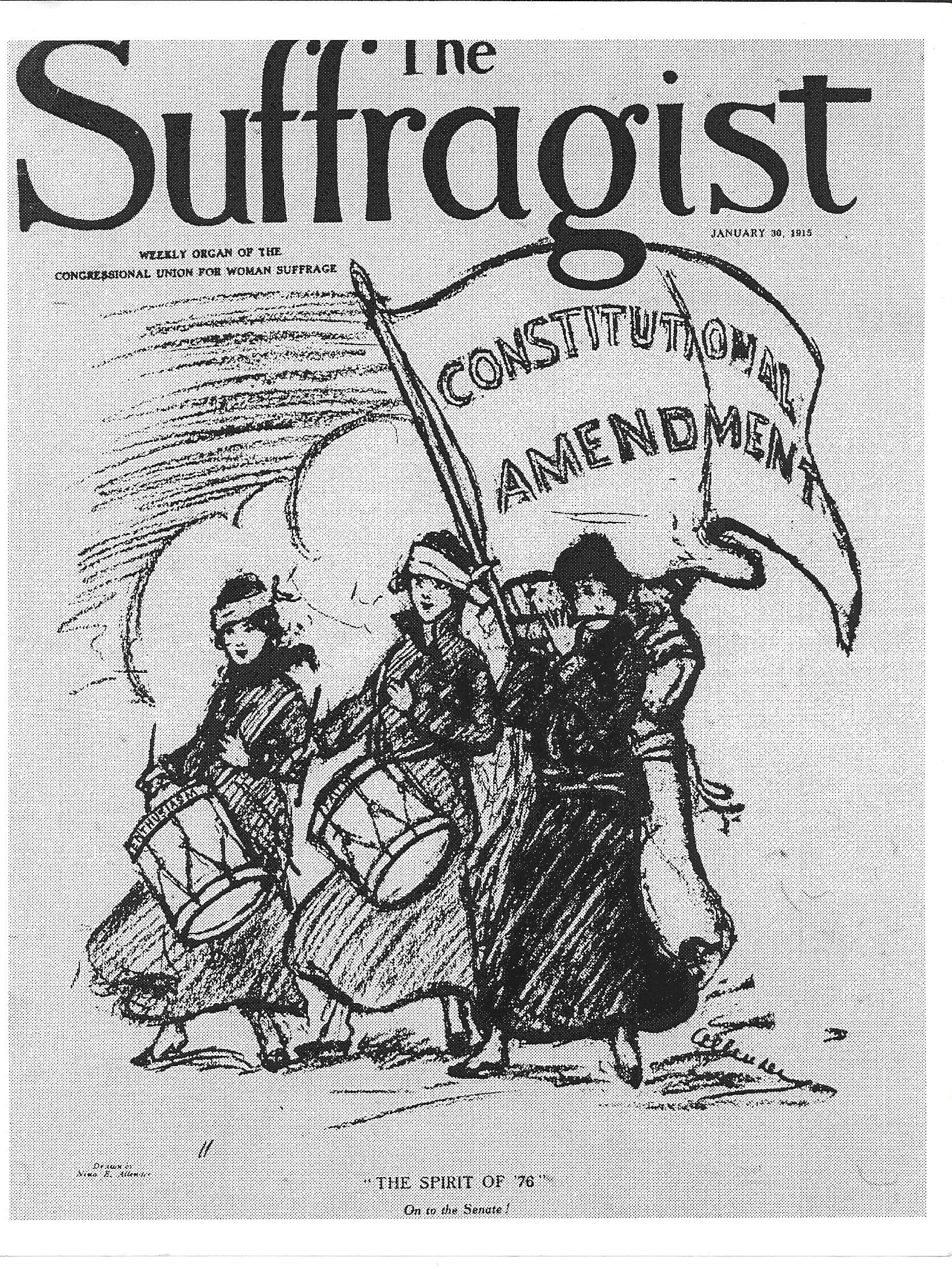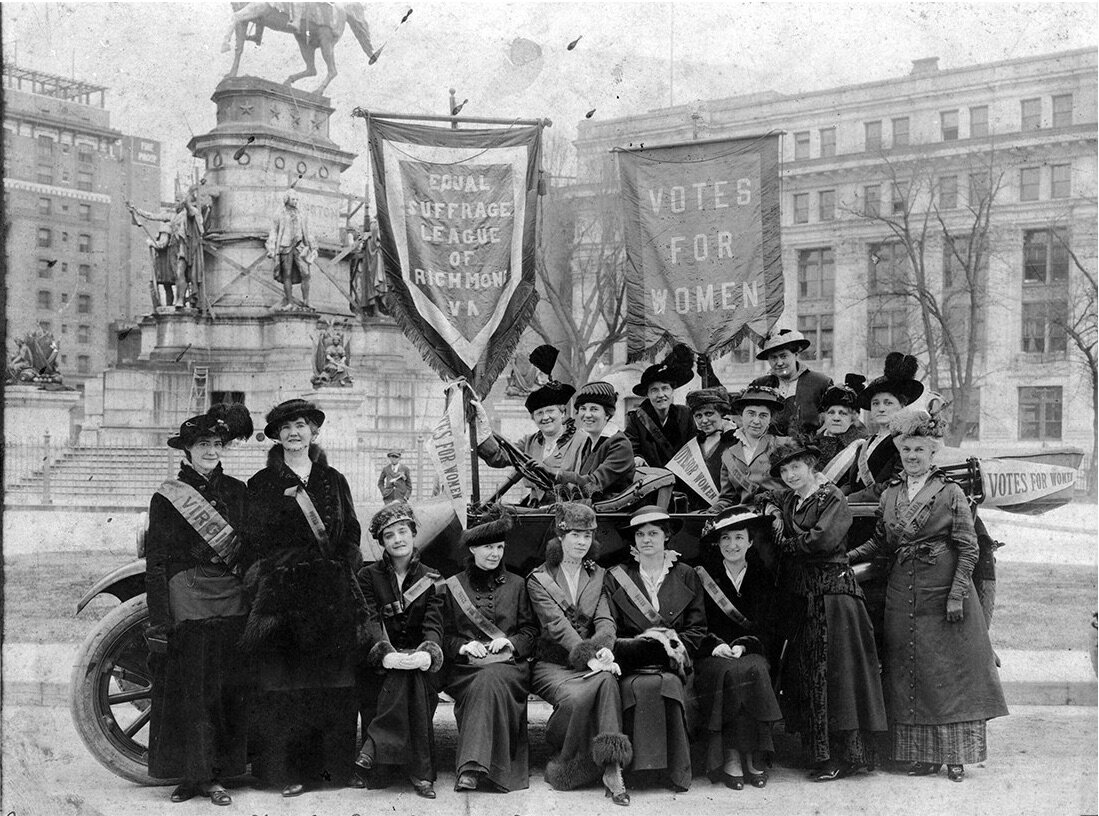CELEBRATING WOMEN EARNING THE RIGHT TO VOTE by Mary Mallory
CELEBRATING WOMEN EARNING THE RIGHT TO VOTE
by Mary Mallory
One hundred years ago August 18, 1920, the Nineteenth Amendment to the United States was ratified, giving all women the right to vote. For more than 70 years, women had fought to gain enfranchisement, and take some power over their own lives. Through steady perseverance, they finally gained the prize.
As early as 1797, the New Jersey Assembly passed a law recognizing women’s right to vote. In 1807 however, the Assembly overturned the right by passing a vote allowing suffrage only by white males. For the next 60 years, women found themselves without enfranchisement in the United States.
Women played an important role during the 1820s and 1830s organizing and popularizing groups like religious movements, temperance leagues, and anti-slavery associations. By the 1840s, many longed for the same rights and opportunities as men, be it voting, owning property, or even controlling their own lives.
Reformers Elizabeth Cady Stanton and Lucretia Mott invited abolitionist activists - mainlly women - to Seneca Falls, New York in 1848 to discuss women’s rights. The convention came to the conclusion that women should be autonomous individuals in control of their own political and social identities, just like men. They produced a Declaration of Sentiments, reworking the Declaration of Independence, stating, “…all men and women are created equal, that they are endowed by their creator with certain inalienable rights, that among these are life, liberty, and the pursuit of happiness.”
The Civll War halted the group’s momentum, but it returned with a vengeance after the War’s conclusion with the passage of the Fourteenth and Amendments Amendments. The Fourteenth Amendment gave protections to citizens, defined as males, while the Fifteenth Amendment guaranteed African American men the right to vote. Women were ignored, and they began demanding universal suffrage at this time.
In 1869, Cady joined with Susan B. Anthony to form the National Woman Suffrage Association fo fight for the adoption of a universal suffrage amendment to the United States’ Constitution. Another group formed the American Woman Suffrage Association to fight for enfranchisement on a state-by-state basis. The two groups merged in 1890 for strength in numbers as they patiently and persistently continued their battle.
For decades the groups circulated petitions, held marches, organized meetings and rallies, and pressured Congress to pass the constitutional amendment giving women the right to vote, especiallly after the United States Supreme Court turned away their petitions to give them suffrage. The Wyoming Territory gave full voting rights to women in 1869, with women’s groups working state by state to convince men to recognize a woman’s right to sovereignty and citizenship. The State of California itself voted in 1911 to give its women citizens the right to vote.
At the turn of the Twentieth Century, women’s reform groups joined the Suffrage Assocation to achieve not only the right to vote, but greater social reforms across the United States. Greater numbers gave them more power and voice. Within a few years, the movement splintered, with the more moderate National American Woman Suffrage Association working state by state to gain female enfranchisement and promoting the universal suffrage amendment to the Constitution, while the more militant National Woman’s Party picketed the White House, held hunger strikes, and actively fought for their cause.
By Winsor McCay (September 26, 1871 - July 26, 1934) - This image is available from the United States Library of Congress
By 1915, more states began approving women’s enfranchisement, pressuring Congress to act. Women’s suffrage dominated headlines in 1916, as the NAWSA became the nation’s largest volunteer group. Both the Democratic and Republican National Conventions in 1916 endorsed woman’s suffrage, but only on a state-by-state basis. The NAWSA focused on getting the national suffrage amendment passed, and gained power as women began replacing men in factory positions as they departed to serve in World War I.
President Woodrow Wilson finally proposed the suffrage amendment in 1918 as a war measure, since women were now actively working and supporting the war effort. While it passed the House with one vote to spare, the measure fell short in the Senate, failing again when brought before both houses in 1919.
President Wilson called a Special Session of Congress in spring 1919 to get the amendment passed. Both the Senate and House now ratified the amendment, influencing states to vote their support. As states fell like dominoes one by one towards the required 36, Tennesse provided the ultimate vote when it narrowly approved the Nineteenth Amendment August 18, 1920, making it law across the United States. That November, all American women for the first time could vote in the Presidential election.
Mary Mallory is a historian, archivist, and writer specializing in Los Angeles and Hollywood history. She serves as Secretary for Hollywood Heritage's Board of Directors and gives presentations to a variety of organizations and museums. Mary has written four books, including Hollywoodland, and blogs for the LA Daily Mirror.
https://www.hollywoodheritage.org/online-store/Images-of-America-Hollywoodland-p133327975









